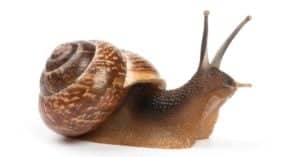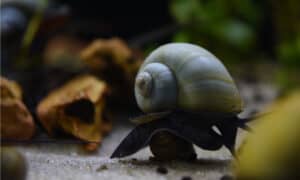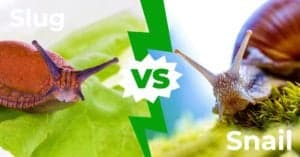Snails make for some of the best pets around. They are super low maintenance, barely eat any food, and are cute in their own special way! Among all the pets in the world, snails offer some of the most diverse options (color, size, and species).
Still, it’s important to know how to set up your snail’s new home before you ever decide to get a snail. Snail terrariums are vast and varied, but let’s look at what you can do to make yours the best it can be. A happy and healthy snail starts with a well-put-together terrarium! Let’s look and learn: Snail Terrarium: 8 Tips to Make The Best Snail Habitat.
How to make the best snail terrarium
Before we start, it’s important to note that we are going to be talking about terrestrial land snails today. Aquatic snails (like those that live in a fish tank) require a different habitat than land snails. For aquatic snails, the best place to start is at your local pet store. Many aquatic snails are included as they act as tank cleaners for fish. Here are a few things to consider while making a habitat for your snails.
Glass or plastic?

Snails make great pets since they are low maintenance and don’t need much attention.
©Bildagentur Zoonar GmbH/Shutterstock.com
The first thing you need to decide when picking your terrarium is its material. The two main options are going to be glass and plastic. They both have their advantages, so ultimately, it will be up to you which you prefer, just make sure you get something you can see through since you are going to want to watch your little friend moving around through the day!
Thankfully, both options are really cheap. A small enclosure, whether glass or plastic, will only set you back a few bucks. Generally, glass is going to be more expensive, and plastic will be cheaper. Glass often makes for a more professional look and a clearer view, but some plastics are extremely clear and make it hard to tell a difference.
When picking your container, the MOST important thing to ensure is that it comes with a breathable lid. Since snails are excellent climbers, a lid is paramount to ensure they don’t end up hiding somewhere in the house. Additionally, there needs to be ventilation to allow the transfer of gasses. Many terrariums and enclosures at pet stores offer both options with ventilation lids.
How big should my snail enclosure be?
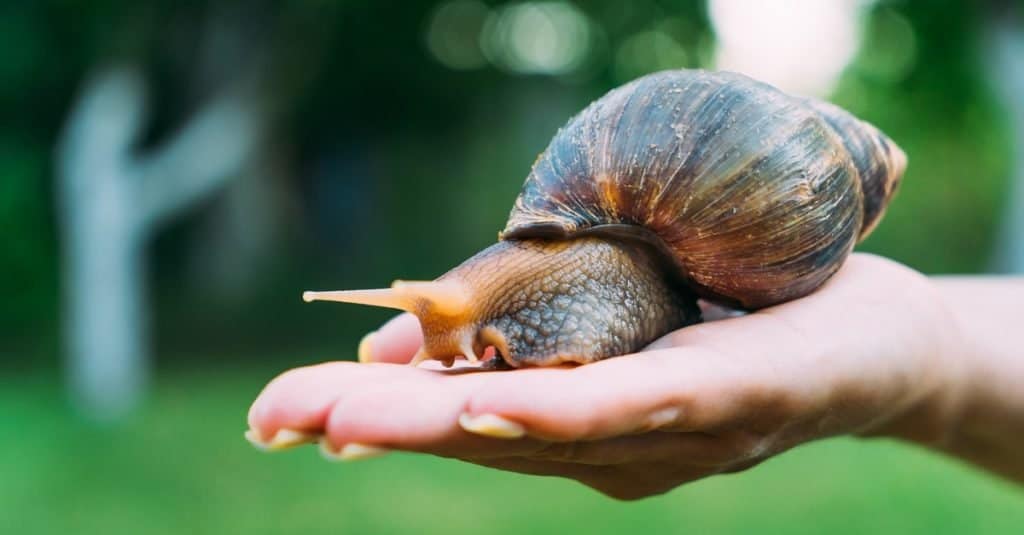
You can fit a single 1-inch snail in a 1-gallon terrarium. Multiple
snails can comfortably live
in a 10-gallon terrarium.
©Terelyuk/Shutterstock.com
There aren’t any hard and fast rules for the size of your enclosure, but it’s important you give your snails enough room to eat, hide, and live without interference. Generally, a 1-gallon container is plenty large for a single 1-inch snail. As you scale up, you can add snails. Many people find that a 10-gallon container is as big as they ever need and can easily house multiple snails at once. Snails don’t take up much room and are slow-moving. As such, you don’t have to be too picky when choosing your container size.
One note, however, is that if you are going to be housing multiple snails in your enclosure, two things could happen. Firstly, it’s likely they will mate and lay eggs. Snails are hermaphrodites and aren’t picky about mates. You could easily find yourself with a whole container of snails that need to be managed if you have more than one. Secondly, some species of snail are predatory, especially towards other snails. If you plan on keeping a carnivorous snail around, know that any enclosure buddies may have their days numbered.
What should I put in my snail enclosure?
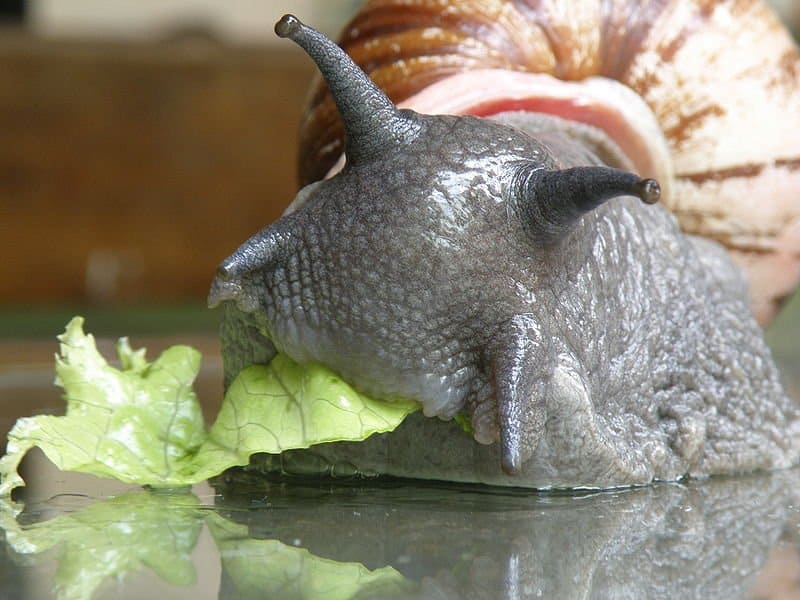
Snails need a water bowl, substrate, and some things to climb on and hide in.
©Dcschmidt – Public Domain
This is the big question. Let’s look at some of the basics.
The most important part of the enclosure is the substrate. The substrate is simply the material that sits at the bottom of the tank. Generally, people use dirt (that doesn’t have fertilizers in it) or some type of store-bought substrate. Generally, you want enough substrate for the snail to be able to bury itself when needed. If in need of substrate, lizard substrate is cited to be a great replacement.
Additionally, your snail will need some ground cover, some things to climb on, and somewhere to hide. A few leaves, sticks, and some moss will be ideal. The leaves and sticks provide texture and things for the snail to climb on, while the moss will help keep the terrarium moist. You can get creative when making a hiding place for your snail!
Finally, keeping a water bowl is essential for the snail to stay hydrated.
What should I NOT put in my snail enclosure?

You should never use fertilizers or chemical cleaners when maintaining your terrarium.
©iStock.com/Daniela Schröder
There are a few things that you should never put in a snail enclosure.
Firstly, ensure that your substrate is free of pesticides and fertilizers. These can harm and even kill your snail if placed within the enclosure. Potting soil may feel perfect for a snail, but often they have deadly fertilizers.
Snails generally don’t need warming lights in their terrarium. If you have captured your snail in your local habitat, light isn’t necessary and can potentially harm or dry your snail out.
Do your best to keep hard objects away from the climbing areas of the terrarium. A fall from a tall stick onto a ceramic plate could break the shell and kill your snail. This isn’t always possible, but do your best to minimize potential injury.
How do I maintain my snail enclosure?
Maintaining your snail enclosure is simple. Once a day, you can mist or spray the terrarium with water (that’s been dechlorinated) to keep things moist. Moss really helps hold onto the mist and keeps things ideal. Additionally, the terrarium should be cleaned often. Obviously, more is better than less, but don’t go more than a month without cleaning your terrarium. Simply use soap to wash down water and food dishes. Additionally, wipe down the sides and interior with plain water to keep things clear and clean.
Bonus: Do You Need to Provide Shells for Pet Snails as They Grow?
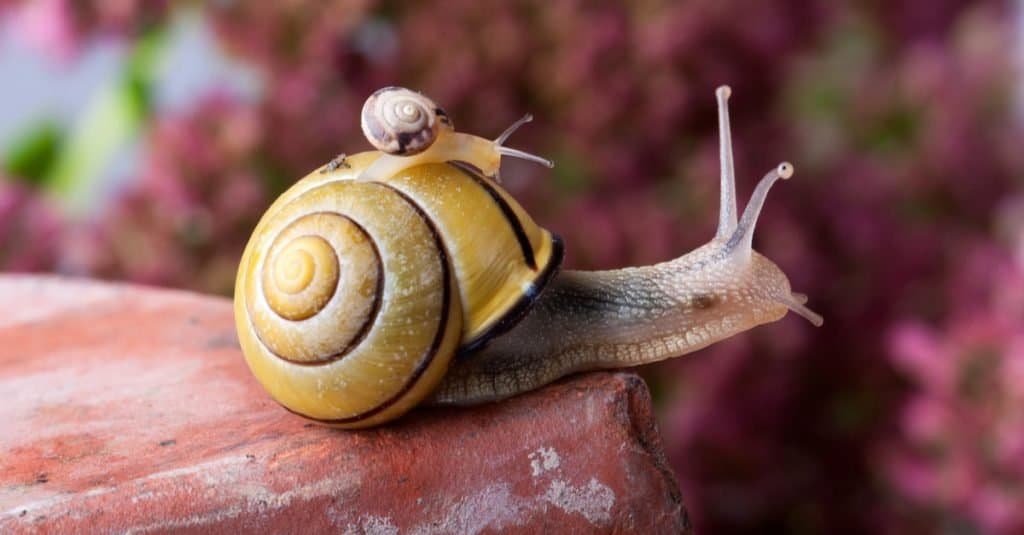
Unlike pet hermit crabs – snails don’t need shells provided by humans.
©Nailia Schwarz/Shutterstock.com
Snails are born with the beginnings of a tiny shell that grows with them – so you don’t have to provide bigger shells for your pet. One thing you must provide is a calcium source to keep your snail healthy with a growing shell. Baby snails eat their eggshells for a dose of calcium as soon as they are born – after that it is up to you to provide nutritious food. Snails need calcium-rich foods like broccoli, kale, soybeans, turnip greens, peas, and okra to grow healthy shells. Basil, cabbage, carrots, lettuce, and strawberries are also favorites.
Summary of 8 Tips to Make the Best Snail Habitat
Follow this guide to create the best home for your pet snail:
| Tips for the Best Snail Habitat | |
|---|---|
| 1 | Choose a terrarium with a breathable lid |
| 2 | When housing multiple snails – make sure they aren’t predatory |
| 3 | The most important part of the enclosure is the substrate |
| 4 | Your snail will need ground cover, things to climb on, and somewhere to hide |
| 5 | A water bowl is essential for the snail to stay hydrated |
| 6 | Snails don’t need warming lights |
| 7 | Keep hard objects away from climbing areas |
| 8 | Keep your snail habitat misted and clean |
The photo featured at the top of this post is © Andrey Armyagov/Shutterstock.com
Thank you for reading! Have some feedback for us? Contact the AZ Animals editorial team.



